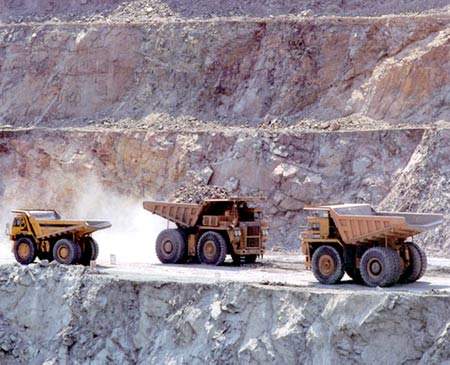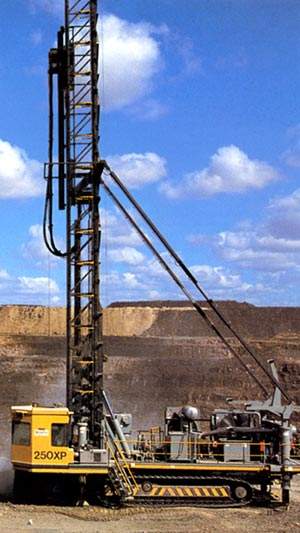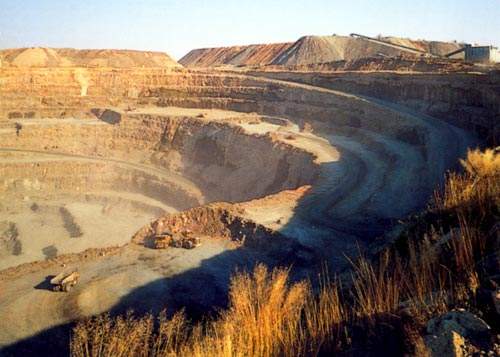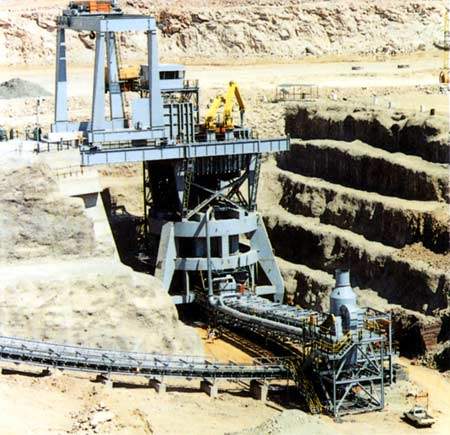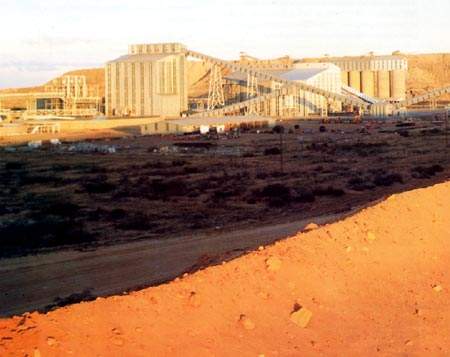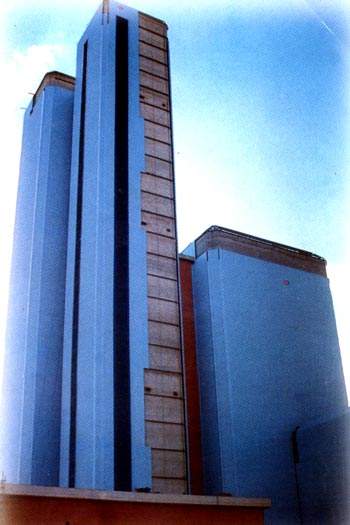Debswana is the world’s leading producer of gem diamonds, contributing about 30% of world output by value from four mines. Following detailed exploration by De Beers in the 1960s, the Orapa diamond mine, located about 240km west of Francistown, began production in July 1971. It was fully operational in August 1982.
Since then, Debswana Diamond Company Ltd opened three more open pits: Letlhakane, which is 50km from Orapa, in 1975; Jwaneng, 120km west of the capital city, was discovered in 1975 and became operational in August 1982, Gaborone, in 1981-82; and the P225 million ($42.16m) Damtshaa, which is 20km east of Orapa and is managed from there, in 2003. Damtshaa mine was officially opened in October 2003.
In 1989-1999 the P1.6bn ($0.34bn) Orapa 2000 project was doubled in capacity.
Debswana is a 50:50 partnership between the Botswana Government and Swiss-based De Beers Centenary, a 100% subsidiary of DB Investments/De Beers SA in Luxembourg. The Botswana Government has a 15% interest in DB Investments which it took over from Debswana. The company had an overall workforce of about 5,500: 180 at Damtshaa, 2,150 at Jwaneng, and a total of 3,137 at the Orapa and Letlhakane operations, as of 2003.
Debswana Diamond Company shutdown its operations from 25 February 2009 to 14 April 2009 due to less demand for rough diamonds in the market. Production at the Damtshaa mine and Orapa No.2 plant was initially ceased until the end of 2009 but was later extended until 2010 due to incertitude in the market.
The operations at the Jwaneng, Orapa and Letlhakane mines were recommenced on 15 April 2009.
Geology and reserves
The AK1 kimberlite at Orapa intruded Archaean and Karoo Supergroup strata some 93 million years ago. The kimberlite covers 118ha at surface, but comprises two individual intrusions that coalesce near the surface. Rocks from all three facies (crater, diatreme and hypabyssal) were identified. Current mining levels are contained within the crater-facies units. At Letlhakane, three different distinct episodes of intrusion are currently recognised in the D/K1 kimberlite, resulting in the formation of two ore types. LM2 (Letlhakane Mine 2) has a basalt content ranging from 5% to 80% while LM1, found in the northern half of the pipe, has less than 10% basalt.
There are four pipes at Damtshaa. The 5.5ha B/K1, which was actually the first kimberlite discovered in the Orapa / Letlhakane province, partly comprises tuffisitic kimberlite breccia (TKB). B/K9 has a sub-outcrop area of 11.4ha, includes hypabyssal kimberlite and TKB, and contributes 88% of the new mine’s output. The B/K12 pipe, 800m northwest of B/K9, has a sub-outcrop area of 3.2ha, and a maximum diameter of just over 200m with sedimentary crater facies infill to at least 90m depth. The B/K15 kimberlite can generally be described as a diatreme-facies TKB.
The kimberlite pipes at Jwaneng intruded shales of the Transvaal Supergroup about 250 million years ago, and are older than most kimberlites in southern Africa. They are filled with crater-facies material to a depth of 600m, the dominant infill reworked volcaniclastic kimberlite, but each pipe exhibits a distinct geology and diamond grade signature. In 2004, mining revealed the existence of a fourth pipe.
The company does not publish information about its reserves.
Mining
Working a seven-day week, the open pits are medium- to very large-scale operations: Orapa extracts 20Mtpa of ore and 40Mtpa of waste. They use rotary drills and large shovels, either electric where grid power is available or diesel / hydraulic where it is not, dozers, wheeled loaders, and a variety of Caterpillar and Komatsu haul trucks ranging from 85st capacity to 240st capacity Caterpillar 793Cs used at Jwaneng. Truck dispatch is by computer-based systems, and Jwaneng has a Gemcom integrated mine production and management system.
Debswana Diamond Company received approval from the Government of Botswana and De Beers in November 2009 to begin the expansion of Jwaneng mine for extracting additional reserves. The expansion contract is also known as Cut 8 and requires removal of 700Mt of waste at the mine to recover 78Mt of diamond bearing ore.
Debswana Diamond awarded a $450m EPCM contract to Fluor Corporation in March 2010 to carry out the Jwaneng’s Cut 8 expansion project. The project was launched in December 2010 and extends the life of the mine out to 2025.
Majwe (a joint venture between Leighton International and Basil Read and Bothakga Burrow) was awarded a five-year, $580m contract by Debswana Diamond in May 2011 to remove 400Mt of overburden at Jwaneng mine as part of the Cut 8 contract. Under the contract, Majwe will also render services such as mine scheduling, drilling and blasting, truck and shovel waste removal as well as limited ore mining to Jwaneng mine.
Processing
Debswana introduced in-pit crushing at Jwaneng in the mid-1990s. Following secondary crushing, dense-medium cyclones separate 99% of the waste from the diamonds. Tailings from this process are recrushed and recycled. Security is a key feature of plant design, especially the materials-handling systems. For example, pneumo-drier conveying systems simultaneously transport, dry and protect particulate materials.
The concentrate from Orapa, Letlhakane and Damtshaa goes to the multi-storey Completely Automated Recovery Plant (CARP) at Orapa, and that from Jwaneng to a similar facility on site. The Jwaneng CARP is part of the Aquarium project, which reached full capacity during 2003 and added the Fully Integrated Sort House to handle the diamonds recovered by both CARPs. The Aquarium project was De Beers’ first fully hands-off recovery and sorting facility, utilising X-ray and laser technology.
Bateman Engineering was awarded an R84.3m contract by Debswana Diamond in February 2006 to increase the processing capacity at the Damtshaa mine from 200 tonnes per hour (tph) to 400tph.
Production
In 2005, Debswana recovered a third successive record amount of diamond, 31.89 million carat tonnes (Mct) compared with 31.12Mct in 2004 and 30.2Mct in 2003, despite a major slope failure and the loss of a loading shovel by fire at Orapa. Orapa, Letlhakane and Damtshaa contributed 16.3mct and Jwaneng 15.6mct.
Jwaneng produced 11.5Mct of saleable diamonds in 2010. Letlhakane mine extracted 1.2Mct of saleable diamonds from 3.3Mt of ore in 2010. Production at the Orapa mine in 2010 was 9.528Mct of diamonds.

